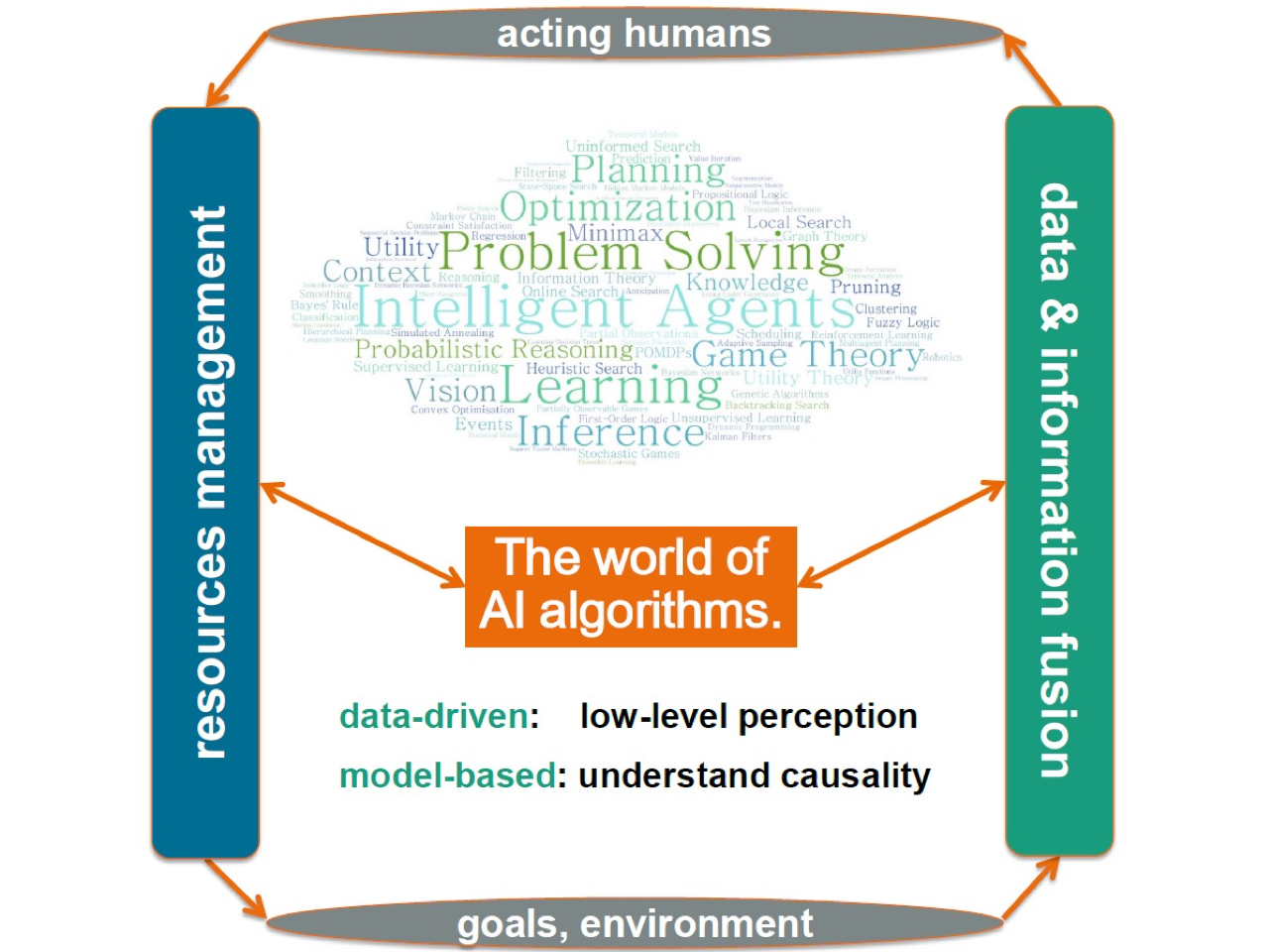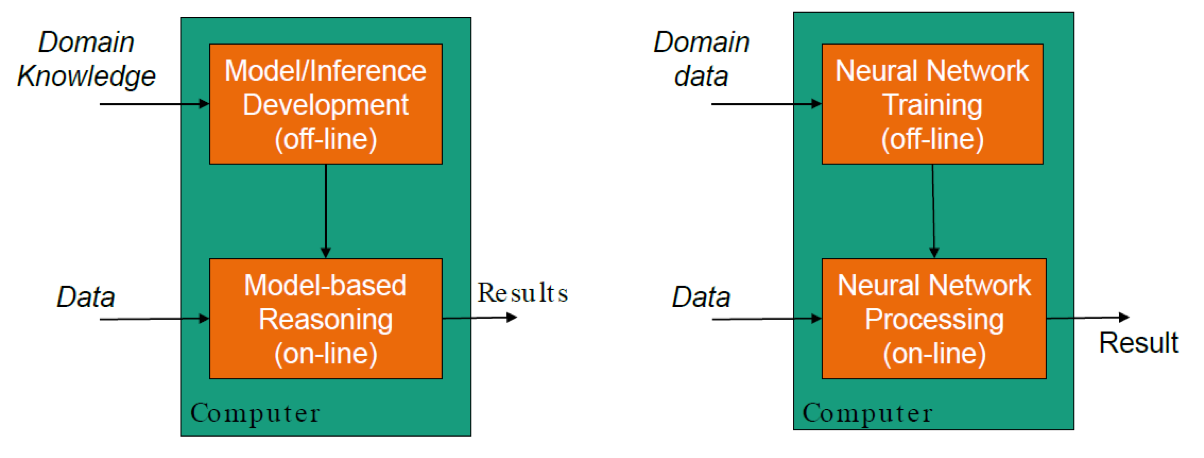Title |
Artificial Intelligence for Military Multisensor Fusion Engines
|
Start_Publishing |
08/07/2019
|
Panel_Page |
SET
|
Page_ID |
3660
|
Main_Body_Multi |
NATO SET-262 – RSM on “Artificial Intelligence for Military Multisensor Fusion Engines”
Wolfgang Koch
Fraunhofer FKIE, Wachtberg, Germany.
Comprehensive
networking, ubiquitous sensors, artificial intelligence, Bayesian
reasoning, neural networks, machine learning, the Internet of Things,
autonomous robots or drones, and many more topics are omnipresent in
civil applications. This is even more so in NATO’s missions, where vast
amounts of sensor data from a diversity of platforms and context
knowledge are to be exploited for supporting situational awareness and
military action. Defence technologies, however, are not only influenced
by the “digital revolution”. Quite on the contrary – information
technologies labeled by “AI” have their roots in defense research and
technology and are driven by them.
Recent advances in AI enable the
design of powerful Multisensor Fusion Engines that are already and will
increasingly be the very backbones of NATO’s situational awareness
capabilities. They seamlessly embed mature AI algorithms in overarching
C5(J) ISR systems. Exploiting advanced communications links, fusion
engines have to be cyber-safe and jamming resistant and are to be
integrated into manned-unmanned teaming with intuitive human-machine interfaces.
The
Research Specialists’ Meeting SET-262 on “Artificial Intelligence for
Military Multisensor Fusion Engines”, held on November 4 – 5, 2018 in
Budapest, HUN, addressed sensor-focused AI methodologies and design
issues. This included probabilistic reasoning over time, statistical
decision making, big, sparse, and social network data, target tracking,
image classification, anomaly detection, machine learning, and sensor
and resource management. 21 technical papers have been presented, of
which 4 invited Keynote speeches were given by distinguished speakers.
The SET-262 RSM was the complementary counterpart of IST-160 RSM on “Big
Data and Artificial Intelligence for Military Decision Making”, held on
May 30 – June 1, 2018 in Bordeaux, FRA.
Among the challenges of
using AI technologies in a military context, the RSM firstly identified
the lack of data on which to train multisensor fusion engines. Moreover,
many AI practitioners lack experience in applying these methods to
military applications. Thirdly, military decisions must be
“explainable”, i.e. “black boxes” are unacceptable for human decision
makers acting responsibly, and robust in a fog of uncertainty, implying
self assessment of quality of predictions. Finally, near real time
adaptation to changing threats is challenging since Deep Neural
Networks, e.g., are well known for being slow to train.
The SET-262
RSM made clear that military applications severely stress the
state-of-the-art in AI compared to civil applications. In a sense, we
are in the early days in the exploration of AI technologies for defence.
Future progress will require critical judgment and have to find the
“low hanging fruit”.
|
Page_Intro |
Comprehensive networking, ubiquitous
sensors, artificial intelligence, Bayesian reasoning, neural networks,
machine learning, the Internet of Things, autonomous robots or drones,
and many more topics are omnipresent in civil applications. This is even
more so in NATO’s missions, where vast amounts of sensor data from a
diversity of platforms and context knowledge are to be exploited for
supporting situational awareness and military action. Defence
technologies, however, are not only influenced by the “digital
revolution”. Quite on the contrary – information technologies labeled by
“AI” have their roots in defense research and technology and are driven
by them. |
HomePageImage |
2019-SET-262-2.png
|
HomePageBodyText |
NATO SET-262 – RSM on “Artificial Intelligence for Military Multisensor Fusion Engines”
Wolfgang Koch
Fraunhofer FKIE, Wachtberg, Germany.
Comprehensive networking, ubiquitous sensors, artificial intelligence, Bayesian reasoning, neural networks, machine learning, the Internet of Things, autonomous robots or drones, and many more topics are omnipresent in civil applications. This is even more so in NATO’s missions, where vast amounts of sensor data from a diversity of platforms and context knowledge are to be exploited for supporting situational awareness and military action. Defence technologies, however, are not only influenced by the “digital revolution”. Quite on the contrary – information technologies labeled by “AI” have their roots in defense research and technology and are driven by them.
Recent advances in AI enable the design of powerful Multisensor Fusion Engines that are already and will increasingly be the very backbones of NATO’s situational awareness capabilities. They seamlessly embed mature AI algorithms in overarching C5(J) ISR systems. Exploiting advanced communications links, fusion engines have to be cyber-safe and jamming resistant and are to be integrated into manned-unmanned teaming with intuitive human-machine interfaces.
The Research Specialists’ Meeting SET-262 on “Artificial Intelligence for Military Multisensor Fusion Engines”, held on November 4 – 5, 2018 in Budapest, HUN, addressed sensor-focused AI methodologies and design issues. This included probabilistic reasoning over time, statistical decision making, big, sparse, and social network data, target tracking, image classification, anomaly detection, machine learning, and sensor and resource management. 21 technical papers have been presented, of which 4 invited Keynote speeches were given by distinguished speakers. The SET-262 RSM was the complementary counterpart of IST-160 RSM on “Big Data and Artificial Intelligence for Military Decision Making”, held on May 30 – June 1, 2018 in Bordeaux, FRA.
Among the challenges of using AI technologies in a military context, the RSM firstly identified the lack of data on which to train multisensor fusion engines. Moreover, many AI practitioners lack experience in applying these methods to military applications. Thirdly, military decisions must be “explainable”, i.e. “black boxes” are unacceptable for human decision makers acting responsibly, and robust in a fog of uncertainty, implying self assessment of quality of predictions. Finally, near real time adaptation to changing threats is challenging since Deep Neural Networks, e.g., are well known for being slow to train.
The SET-262 RSM made clear that military applications severely stress the state-of-the-art in AI compared to civil applications. In a sense, we are in the early days in the exploration of AI technologies for defence. Future progress will require critical judgment and have to find the “low hanging fruit”.
| Figure 1: Schematic overview of a
multisensor fusion engine with transforms data from heterogeneous
sensors and non-sensor context knowledge into the informational elements
of situation pictures, the basis for decision making and triggering
effectors. |
|---|
 |
|---|
| Figure 2: Human perception and
action to reach military goals in a challenging environment is made
possible by a variety of algorithms that are data-driven or model based,
empowering data & and information fusion and resources management. |
|---|
 |
|---|
|
Attachments
|
|
 |
|
|

|
